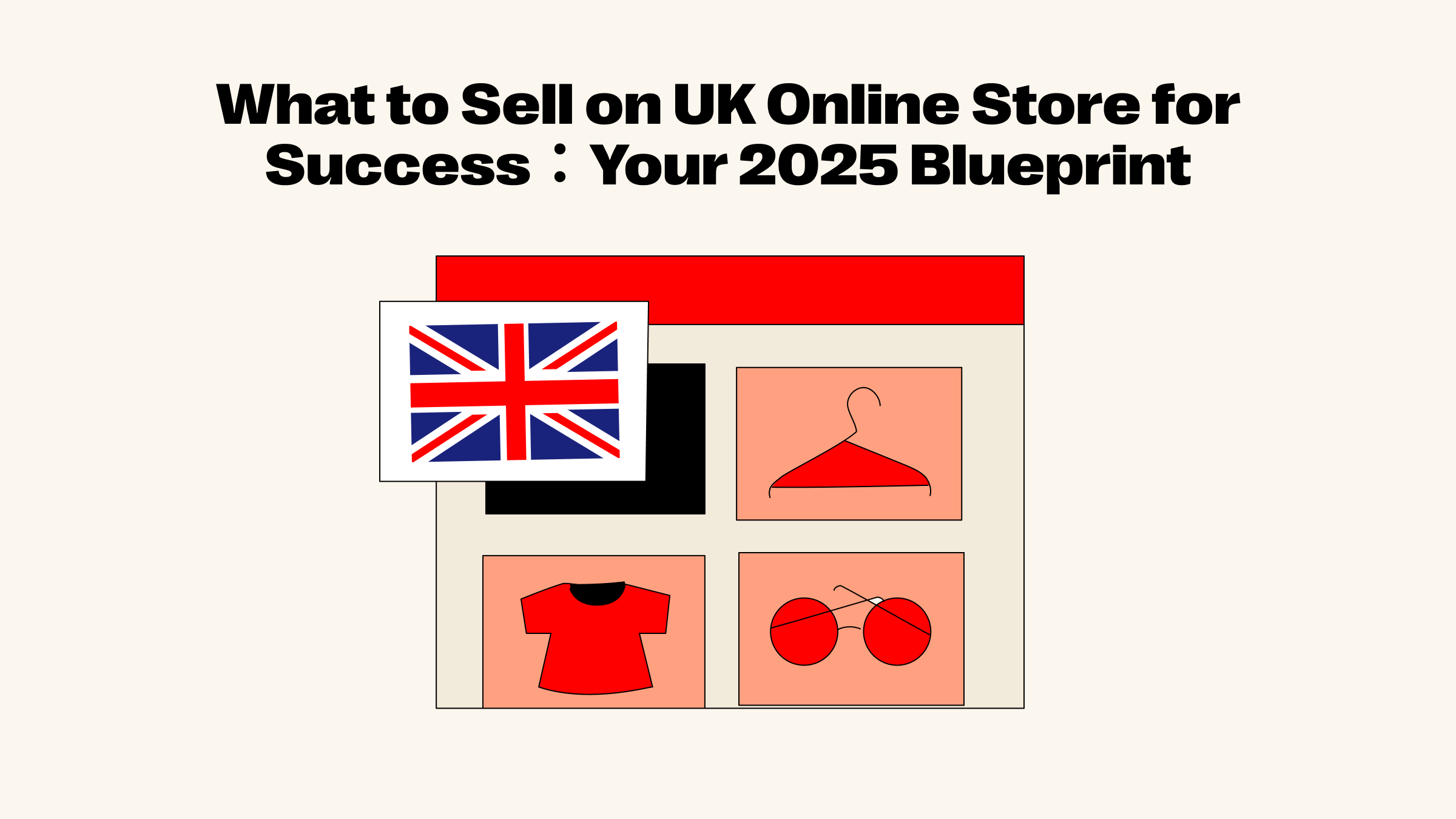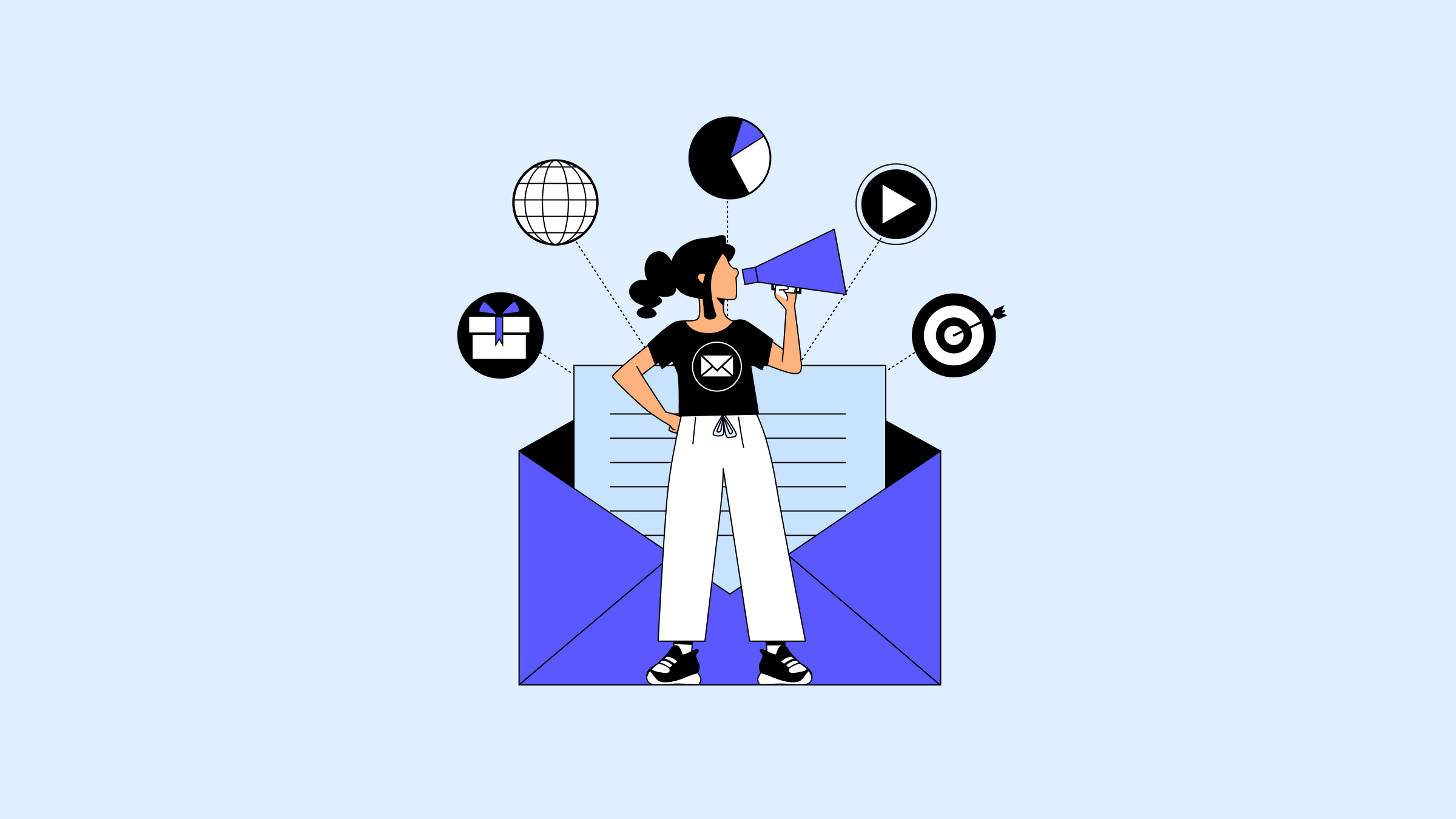Ever wonder why that item priced at $9.99 feels like a steal, or why one bundle option seems like a much better deal than another? It's not magic, it's psychological pricing strategies at play! For small and medium e-commerce sellers like you, pricing isn't just about covering costs; it's a powerful tool to attract customers, boost sales, and grow your business.
If you're not a tech wizard and want straightforward ways to make more money, you're in the right place. This guide will break down how to use pricing strategies psychologically effectively, simply, and without needing any complex coding.

What is psychological pricing?
You've likely experienced the pull of a "just under" price or felt drawn to a bundled deal. These aren't random occurrences; they're direct results of psychological pricing strategies in action. At its core, psychological pricing is the art and science of setting prices in a way that appeals to human emotions and biases, rather than just logical calculation. It's about influencing how customers perceive value and cost, often making them more likely to buy, or even spend a little more.
Think of your product price as more than just a number; it's a key ingredient in your store's success and a powerful tool to:
-
Boost Your Bottom Line: The right price means more profit and more sales. Price too low, and you risk losing money. Price too high, and you'll find no buyers. When every dollar counts for small and medium businesses, smart pricing directly impacts your store's survival.
-
Get You Noticed: In the crowded online world, an attractive price can make your products stand out. Whether customers are searching on Google or discovering products through ads, a competitive price drives more clicks, helping you get discovered.
-
Encourage Buying: Everyone loves a good deal! But sometimes, a higher price can also signal unique value and quality. Psychological pricing strategies help you find that sweet spot, making customers feel like they're getting a bargain and something truly valuable. Master this, and you'll unlock more sales! It's precisely this art of influencing consumer perception through pricing, often tapping into the fact that consumers rarely know the exact "true" cost of an item.
8 Psychological pricing strategies for your e-commerce store
Ready to make your prices work harder for you? Let's dive into 8 simple psychological pricing strategy examples you can start using today. Understanding the psychology behind pricing strategies will empower your decisions by leveraging natural human biases.
1. Charm pricing
This is one of the simplest and most effective pricing psychology strategies. Our brains tend to focus on the first digit of a price – a phenomenon known as the "left-digit bias." So, $9.99 feels much closer to $9 than $10. It creates a subconscious feeling of a better deal, tricking the mind into perceiving a greater discount than there truly is. This specific psychological pricing strategy revolves around manipulating perceived value through this subtle numerical trick.
How it works: Price your items just below a round number (e.g., $19.99 instead of $20.00).

-
Example: Think of almost any major retailer, from Amazon to Zara. You'll constantly see products like a T-shirt for $19.99, a new gadget for $499.99, or even digital subscriptions like Netflix at $9.99/month. This widespread use proves its effectiveness in making products seem more affordable.
-
Best for: Perfect for almost all products, especially everyday items or anything where customers are price-sensitive.
-
Easy setup: When you edit your product price on your online store, just type in the ".99" or ".97" ending.
2. Loss leader pricing
Imagine a supermarket selling eggs at an unbelievably low price. They might not make much profit on those eggs, but you come in for the eggs and end up buying other high-profit items. That's a loss leader – a product priced super low to get people into your store. This is a shrewd psychological pricing strategy definition applied to traffic generation, sacrificing short-term profit on one item for overall sales growth.
How it works: Pick one popular item and price it very low (maybe even at cost) to draw attention to your store or a new product.
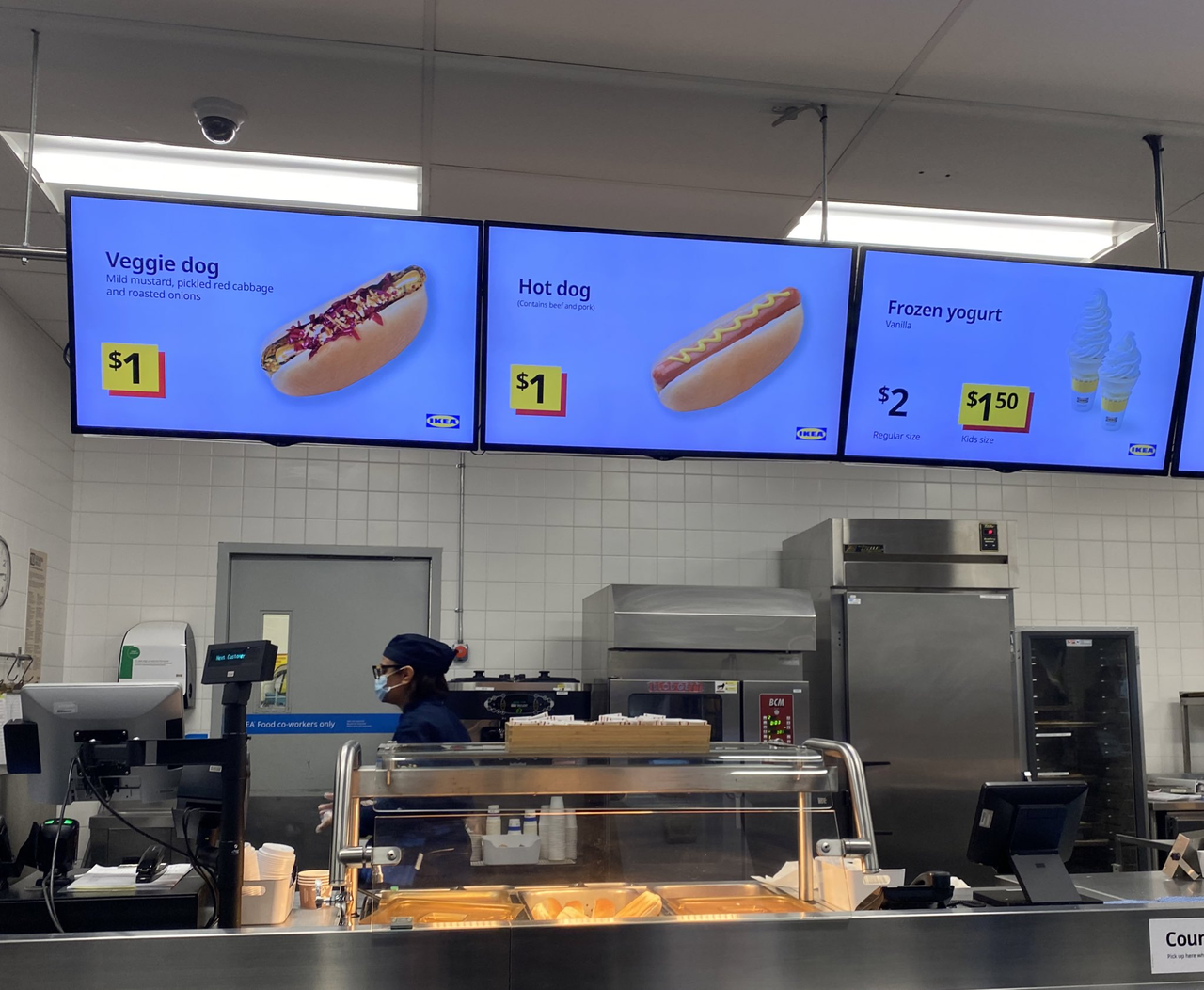
-
Best for: Great for new stores, launching new products, clearance sales, or big promotions.
-
Easy setup: Simply select your 'bait' item from your product list, set its price to be highly attractive, and strategically present it to encourage further purchases of related, higher-margin items.
3. Partitioned pricing
Got a high-priced item or service? Don't scare customers off with one big number. Break it down into smaller, easier-to-digest chunks. "$10 a day" sounds much better than "$3650 a year," even if it's the same amount! This demonstrates how consumer psychology pricing strategies can make high costs palatable by focusing on smaller, more manageable units of payment.
How it works: If you have an annual subscription, show the monthly cost or daily cost. If you sell a large quantity, show the "price per unit."

-
Example: A common example is showing the "price per ounce" or "price per unit" for bulk items in grocery stores, making a large purchase seem more affordable compared to smaller packages.
-
Best for: Ideal for high-value products, subscriptions, or services charged monthly/annually. This is a common price-setting strategy psychological pricing technique for long-term commitments.
-
Easy setup: In your product description, write "Only $10 per month!" instead of just "$120." You can also create a graphic by customizing a specific product page that visually breaks down the cost (e.g., a yearly subscription showing 12 smaller monthly payments).
4. Innumeracy / Illusory pricing
Sometimes, how you phrase a discount can be more powerful than the discount itself. "Buy $100, Get $10 Free" often feels better than "10% off," even though it's the same deal! This is about making customers feel like they're gaining something extra, playing on our tendency to focus on the "free" rather than the overall math. If you're wondering what is the psychological pricing strategy that plays on perceived gain and a bit of "fuzzy pricing knowledge," this is it.
How it works: Frame your discounts as offering "something extra," such as through a Buy X Get Y campaign, rather than simply a price reduction. Additionally, showcase the number of items already sold or positive customer reviews.
-
Example: A common retail promotion is "Buy One Get One Free" or "Buy Two, Get One 50% Off." While a straight percentage discount might equate to the same savings, the idea of getting something "free" or a "bonus" often feels more compelling to consumers.
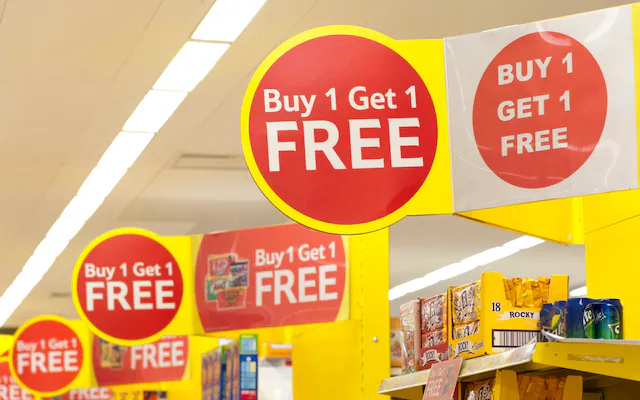
-
Best for: Great for promotions, discounts, or when you want to build trust and make customers feel smart about their purchase.
-
Easy setup:- Change your wording: In your product titles or promotion banners, use phrases like "Buy One Get One Free!" or "Get X Bonus Items!"- Add social proof: Use simple sales pop-ups or integrate review displays to show "X items sold" or "Average customer rating: X stars" on your product pages, building confidence.
5. Anchoring / High-low pricing
This strategy creates a sense of urgency and a great deal. You show a higher "original price" that's crossed out, next to a much lower "sale price." This makes the current price look incredibly attractive by setting a high "anchor" in the customer's mind. A significant advantage of psychological pricing strategy like this is its ability to drive immediate purchases, especially when combined with real urgency.
-
Example: Walk into any major department store during a "sale event" or "clearance". You'll see signs everywhere: "Original Price: $99.99, Now Only: $49.99!" This is also standard for smartphones or video games which launch at a premium price, then drop as new models are released, always showing the original higher price to highlight the perceived saving.
-
Best for: Perfect for new product launches, holiday sales, or clearing out old stock.
-
Easy setup:- Set "Compare At" Price: On your product editing page, look for fields like "Compare at price" or "Original price." Enter the higher price there. Then, enter your actual "Selling price." Your platform will automatically display the crossed-out original price!- Add urgency: Utilize countdown promotion notifications and timers to emphasize limited-time offers or low stock. This generates excitement for sales or new products and encourages quicker decisions.

6. Tiered pricing / Decoy effect
Do you have different versions of your product or service? Offer them at different price points. This allows customers to choose what best fits their budget and needs, and often encourages them to pick a mid-range (more profitable) option. This provides a clear definition of psychological pricing strategy that caters to varied customer segments, sometimes even including a "decoy" option that makes another option look much better.
-
Example: Think of Netflix subscriptions: Basic, Standard, and Premium tiers offer different video quality and number of screens, guiding users towards the most popular (and often more profitable) middle option. Similarly, many SaaS companies (like Dropbox or Mailchimp) offer tiered plans based on features, storage, or user count, ensuring there's an option for everyone from individuals to large enterprises.
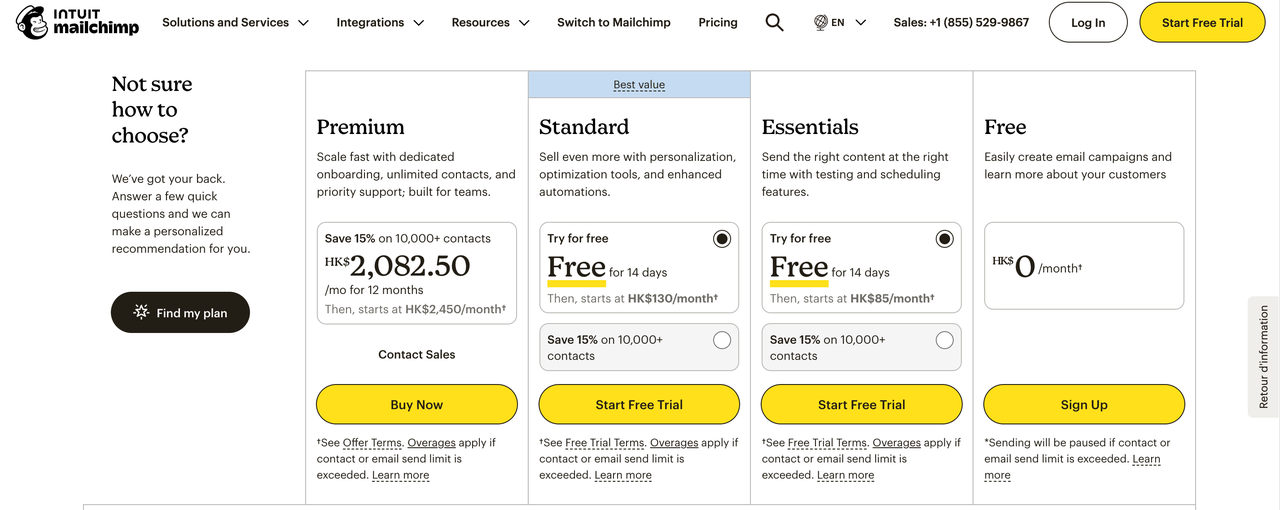
-
Best for: Ideal for products with different qualities (e.g., a basic phone case vs. a premium one) or services with varying features.
-
Easy setup: Use your page builder to create a comparison table with rows or columns, then drag and drop 'text', 'image', and other modules to clearly list the price (bolded), core features (icons + phrases), and exclusive benefits (coloured blocks) of each package.
7. Product bundling
Combine several related products into one package and offer it at a slightly reduced price compared to buying each item separately. Customers feel they're getting a great deal, and you sell more items per order! This is another powerful psychological pricing strategy for increasing average order value and moving inventory.
-
How it works: Group complementary items (e.g., a phone, a case, and a screen protector) or a popular item with a less popular one.
-
Example: Fast-food combo meals (burger, fries, drink) are a perfect example – buying them separately costs more. Tech companies like Apple often suggest buying an iPad and an Apple Pencil together, offering a slight discount or just the convenience of a "complete solution." Online gaming stores also frequently offer "Deluxe Editions" that bundle the game with DLC or extra content at a slightly higher, but seemingly better value, price.
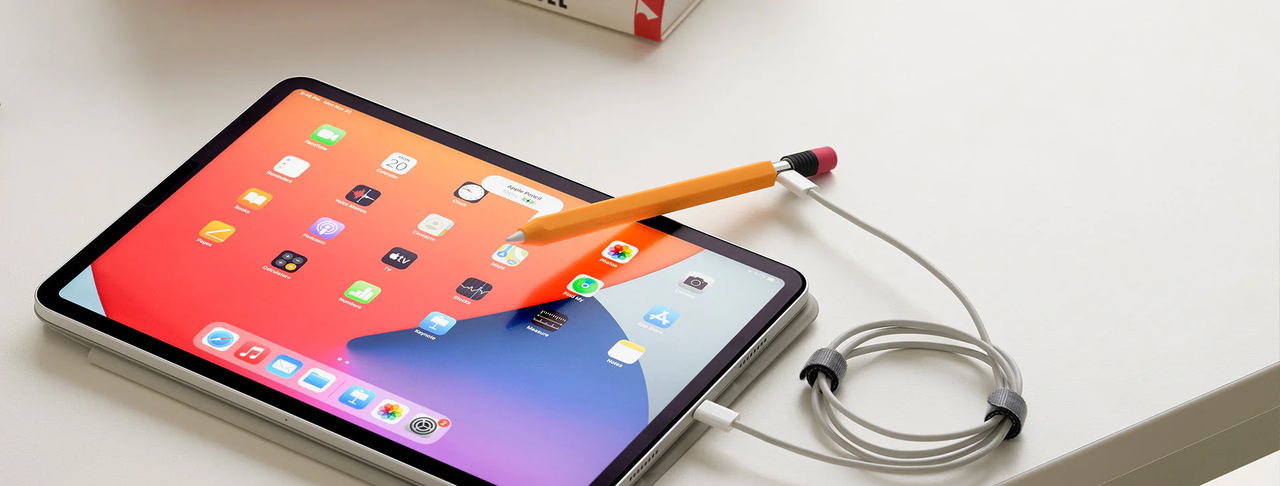
-
Best for: Great for accessories, product collections, or clearing out slower-moving inventory.
-
Easy setup: Create product bundles by selecting items to group and setting a special bundle price. This can inspire additional purchases and entice repeat business.
8. Penetration pricing
If you're launching a new product or brand, sometimes the best way to gain traction is to offer a very competitive low price initially. The goal here is to quickly attract a lot of customers and build your brand. Once you have a strong customer base, you can gradually adjust prices. This represents a long-term psychological pricing strategy focused on market entry and gaining rapid adoption.
How it works: Price your new product or brand slightly below the market average to quickly gain market share.
-
Example: When Google's Gmail first launched, it offered an unprecedented 1 GB of free storage at a time when other email services offered significantly less, quickly attracting millions of users and establishing dominance.
-
Best for: Ideal for new product launches, easily consumed goods, or when you want to quickly become a recognized player in a market.
-
Easy setup:- Set your initial low price: When adding your new product, simply set the price lower than competitors.- Offer early bird discounts: Create product coupons or configure discount features to provide special savings for early customers.
Conclusion
As we've seen, mastering these 8 psychological pricing strategies isn't complicated, and it offers incredible potential to boost your e-commerce sales. By understanding how your customers think about prices, you can empower your online store to attract more buyers and increase your profits. So, what are you waiting for? Start experimenting with these easy-to-implement tactics today and watch your business thrive!
